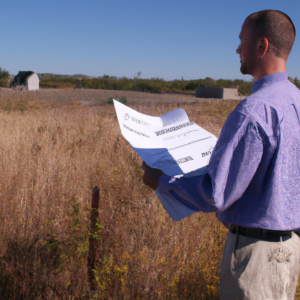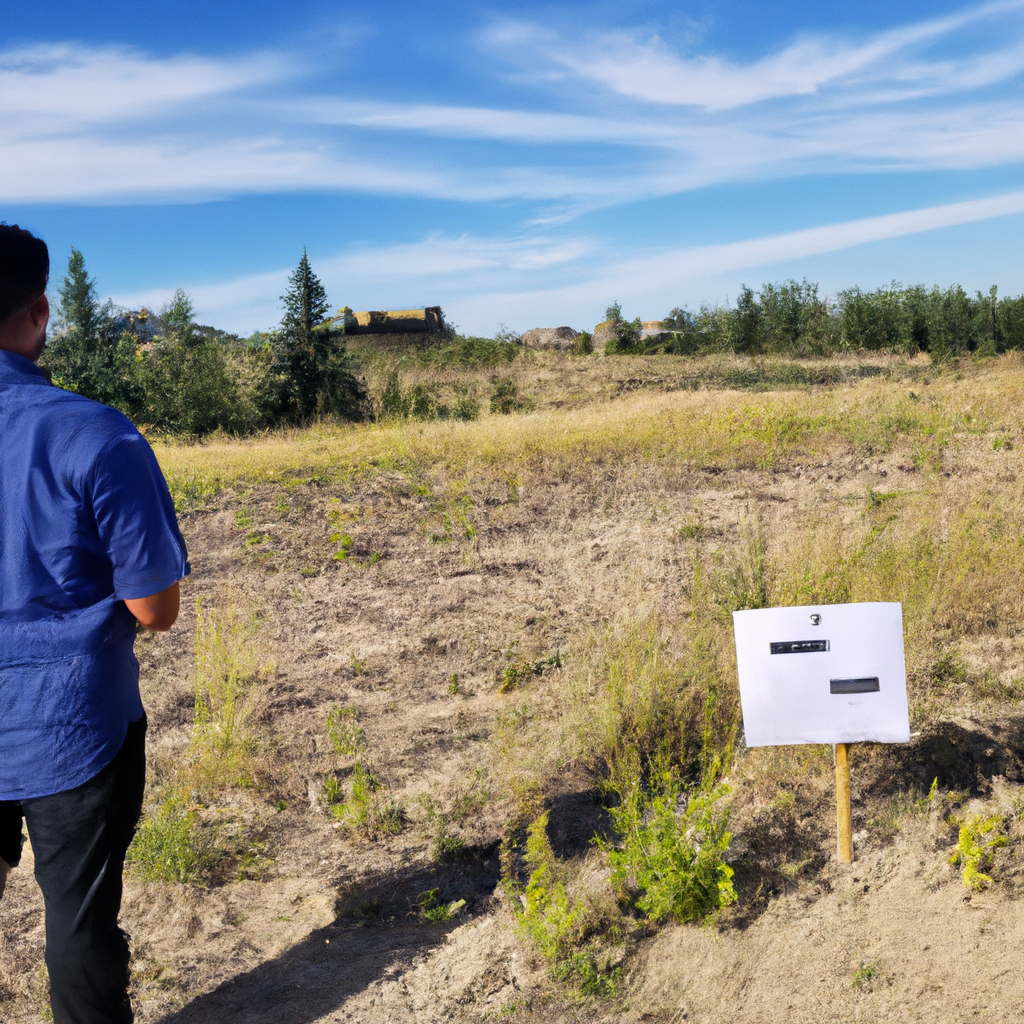A Comprehensive Guide: How to Choose the Perfect Land for Your New Construction
Are you an experienced rehabber but would like to consider building new construction? Would you like some direction on how to start or how to choose the right piece of land? Or, you may have already built a few homes or are a seasoned builder but would like to fine-tune your skills to acquire land to make a more profitable deal. A place where every brick, every beam, and every detail is crafted precisely to your specifications? Well, the first step towards turning that dream into a reality is finding the perfect plot of land. But with so many factors to consider – location, size, zoning regulations – it can feel overwhelming. In this guide, we’ll walk you through all the essential steps and insider tips for choosing the ideal plot for your new construction.
Introduction to the importance of choosing suitable land for new construction
Choosing the suitable land is a crucial first step in any new construction project. It forms the foundation of your dream home or building and can significantly impact its overall quality, functionality, and value. This section will discuss the importance of carefully selecting the land for your new construction and how it can affect your project.
Factors to consider when selecting a land:

When embarking on a new construction project, one of the most important decisions you will make is choosing the perfect land for your build. The land’s location and characteristics can significantly impact your project’s overall success. To ensure that you select the best possible ground for your new construction, here are some factors to consider:
1. Location:
The first thing to consider when selecting a land is its location. This includes not only the city or town it is situated in but also its specific neighborhood and surroundings. Consider factors such as accessibility to major roads, public transportation, schools, shopping centers, and other amenities that may be important to you. Also, consider any potential developments in the area that could affect property value.
2. Zoning and regulations:
Before purchasing any land, it’s crucial to research zoning laws and regulations in the area to ensure that your intended use aligns with them. These laws can dictate what type of structures can be built on the land, their size limitations, setbacks from property lines, and other restrictions that may impact your plans.
3. Topography:
The topography or physical features of a plot of land can significantly influence its suitability for building purposes. Consider things like slope, soil composition (which can affect foundation stability), drainage patterns (which can impact flooding risks), and any natural hazards such as proximity to cliffs or high-risk areas for earthquakes or wildfires.
4. Size and shape:
The size and shape of a parcel are also critical factors when choosing land.
– Location and neighborhood
The location and neighborhood of a piece of land are essential factors to consider when choosing the perfect site for your new construction. It not only affects the value and potential of your property but also plays a crucial role in determining the overall livability and desirability of your future home. In this section, we will discuss critical aspects to look for regarding location and neighborhood when selecting land for your new construction.
1. Accessibility: One of the first things to consider is how easily accessible the land is. Is it situated near major highways or public transportation? Are there good roads leading up to the site? These factors can significantly impact commute times, convenience, and even resale value in the future.
2. Proximity to amenities: Another vital aspect is the proximity to essential amenities such as grocery stores, schools, hospitals, parks, and recreational facilities. Living near these conveniences can make day-to-day life easier and more enjoyable for you and your family.
3. Safety: The safety of a neighborhood should be a top priority when considering a location for your new construction. Research crime rates in the area and speak with local authorities or residents about any concerns you may have.
4. Zoning regulations: It is crucial to understand the zoning regulations in the area where you are planning to build your new home. This will ensure you can construct your dream home without legal barriers or restrictions.
5. Future development plans: Look into any upcoming developments or projects planned for the area. This could include new commercial products, road expansions, or housing projects. These future developments could significantly impact the value and livability of your property.
6. Neighborhood vibe: Take some time to explore the neighborhood and get a feel for the overall vibe and atmosphere. Are there many families with children? Is it a quiet or more lively community? Make sure it aligns with your lifestyle and preferences.
7. Natural surroundings: Consider the natural surroundings of the land, such as views, greenery, and access to nature trails or parks. These factors can significantly enhance your living experience and add value to your property.
8. Noise and pollution levels: Pay attention to noise levels in the area, especially if you are looking at a property near busy roads or industrial areas. Also, check for pollution levels in the air and water sources nearby.
9. Property values: Lastly, research recent sales in the neighborhood to get an idea of property values in the area. This will give you an understanding of how much you should be paying for your land and what potential resale value you can expect in the future.
– Size and shape of the land
When choosing the perfect land for your new construction, one of the most important factors to consider is the size and shape of the land. While this may seem like a straightforward aspect, there are many things to take into consideration.
Firstly, you must determine the land required for your new construction. This will depend on several factors, such as the type of home you want to build, any additional structures or outdoor areas you plan to have, and any local regulations or restrictions on lot sizes. It’s essential to strike a balance between having enough space for your desired design and not purchasing more land than necessary.
The shape of the land is also crucial in ensuring that your new construction is functional and aesthetically pleasing. Aim for a rectangular or square-shaped lot, as this allows for more efficient use of space and makes it easier to design within. Oddly shaped lots can limit your options regarding the placement of buildings and outdoor areas.
Another aspect to consider is the topography of the land. Is it flat or sloped? Are there any natural obstacles, such as large trees or boulders? These features can impact the cost and feasibility of building on the land. For example, a steep slope may require extensive excavation work before the construction can begin, while large trees may need to be removed at an additional cost.
In addition, think about how the size and shape of your lot will affect practical aspects such as access points, parking spaces, and landscaping.
– Zoning and building codes
Zoning and building codes are crucial in selecting your new construction land. Understanding these regulations is essential for ensuring your dream home can be built on the chosen property. In this section, we will delve into the details of zoning and building codes to help you make an informed decision.
Zoning laws are regulations set by local governments that determine how a specific area of land can be used. These laws divide land into different zones, such as residential, commercial, industrial, or agricultural. Each zone has its own set of rules and restrictions that dictate the type of buildings allowed, their size and height limitations, and even the materials that can be used in construction.
Before purchasing a piece of land, it is crucial to research its zoning classification to ensure that it aligns with your plans for the property. Building a house in an area zoned for commercial use may not only be against regulations but also impact your quality of living due to potential noise or traffic from nearby businesses.
In addition to zoning laws, building codes are another essential factor to consider when choosing a plot of land for new construction. Building codes are safety standards that regulate all aspects of building design and construction, including structural integrity, fire resistance, electrical systems, plumbing systems, and more.
These codes aim to ensure the safety and well-being of occupants while also maintaining uniformity in structures within a particular area. Failure to comply with building codes can result in fines or even demolition orders from local authorities.
When looking at potential land for new construction, it is essential to research the specific zoning and building codes for that area. Consider consulting with a local architect or builder for their expertise on these regulations.
Overall, understanding zoning and building codes can help you determine if your desired home design can be built on the chosen property and prevent any future issues during the construction process.
– Soil quality and topography
Soil quality and topography are two crucial factors to consider when choosing the perfect land for your new construction. These elements play a pivotal role in determining the stability, safety, and overall success of your building project. In this section, we will delve deeper into what soil quality and topography mean and how they can impact your decision-making process.
Soil Quality:
The quality of soil refers to its ability to support plant growth, retain moisture, and provide a stable foundation for structures. It is essential to assess the soil quality of a potential building site before beginning any construction work.
One way to determine the soil quality is by conducting a soil test. A professional geotechnical engineer can perform this test by taking samples from different depths of the ground and analyzing them for various factors such as texture, composition, pH levels, and nutrient content. The results of this test will help you understand if the soil is suitable for building or if it requires additional measures like stabilization or reinforcement.
Another aspect to consider when assessing soil quality is its load-bearing capacity. This refers to the amount of weight that the ground can support without settling or collapsing. A high load-bearing capacity is crucial for constructing heavy structures like multi-story buildings or large commercial complexes.
Topography:
Topography refers to the physical features and characteristics of a piece of land, including elevation changes, slope angles, drainage patterns, etc. It plays a vital role in determining how well-suited a site is for construction.
A flat or gently sloping topography is generally preferred for buildings because it provides a stable foundation, easy accessibility, and efficient drainage. On the other hand, steep slopes or uneven terrain can pose significant challenges during construction and may require additional measures like grading and excavation to make the land suitable for building.
Moreover, topographical features can impact the cost of construction. For example, building on a hillside will require more extensive earthwork and foundation work compared to building on a flat piece of land.
It is also essential to consider the natural drainage patterns of the site. A property with poor drainage can lead to issues like soil erosion, waterlogging, and damage to structures. Therefore, it is crucial to ensure that the land has proper grading and drainage systems in place.
Conclusion:
Soil quality and topography are essential factors that can significantly impact your construction project. It is crucial to thoroughly assess these elements before purchasing a piece of land to avoid any potential issues or costly surprises down the line. Consulting with professionals like geotechnical engineers and surveyors can help you make an informed decision about whether a particular piece of land is suitable for your construction needs.
– Utilities and infrastructure
When choosing the perfect land for your new construction, it is important to consider the utilities and infrastructure that are available in the area. These essential services can greatly impact the overall functionality and livability of your future home. In this section, we will discuss what utilities and infrastructure you should look for when evaluating potential land options.
1. Water Supply
One of the most crucial factors to consider is the availability of a reliable water supply. Access to clean water is necessary to live comfortably on your land. Make sure to research if there is an existing water source, such as a public water system or well, and if not, how feasible it would be to install one. You should also check for any potential issues with water quality in the area.
2. Sewage System
Proper disposal of wastewater is essential for maintaining a healthy living environment. If you are purchasing land in an urban or suburban area, there will already be a sewage system in place. However, if you are looking at more rural locations, you may need to install a septic system on your property. This can be a costly undertaking, so make sure to factor it into your budget.
3. Electricity
Access to electricity is another critical utility when building a new home. It powers all our daily necessities, from heating and cooling systems to appliances and lighting fixtures. Before purchasing land, find out what power sources are available in the area – whether it’s through a local utility company or solar energy options.
4 . Gas
If your new home will be using natural gas for heating or cooking, make sure the land is connected to a gas line. If not, find out the cost of installing one and if it is feasible for your budget.
5. Internet and Phone Services
In today’s world, access to reliable internet and phone services is becoming increasingly important. Check the availability of these services in the area before purchasing land, as some remote locations may have limited options.
6. Roads and Access
Consider how accessible the land is and what type of roads lead to it. If you are planning on building a home in a rural area, make sure there is easy access to major roads for commuting purposes.
7. Zoning Restrictions
Before purchasing land, research any zoning restrictions that may affect where and how you can build on the property. These regulations may limit the size, style, or location of your new home.
8. Natural Disasters
Be aware of any potential natural disasters that could impact your new construction project, such as flooding or wildfires. This information can help you determine if additional precautions need to be taken during the building process.
9. Other Utilities
Depending on your specific needs, there may be other utilities to consider, such as cable TV,
– Natural hazards and environmental concerns
When looking for the perfect land for your new construction, it is important to consider any potential natural hazards and environmental concerns that may affect the property. These factors can not only impact the safety of your future home but also have long-term effects on the surrounding ecosystem and community. In this section, we will discuss some common natural hazards and environmental concerns to keep in mind when choosing a piece of land for your new construction.
1. Flood Risk:
One of the most significant natural hazards to consider when selecting land is its risk of flooding. Flooding can occur due to heavy rainfalls, overflowing rivers, or storm surges caused by hurricanes or tsunamis. It can cause severe damage to homes, roads, and infrastructure, as well as pose a threat to human life.
To determine flood risk, you can check with your local government or use online mapping tools that show flood zones in your area. It is also recommended to hire a professional surveyor who can assess the topography of the land and identify potential flood-prone areas.
2. Seismic Activity:
If you are considering building in an area prone to earthquakes or other seismic activity, it is essential to evaluate the structural integrity of the land before beginning any construction work. Soil composition and ground stability are crucial factors that impact how well a structure can withstand strong tremors.
– Researching the area and its potential for growth
When searching for the perfect land for your new construction project, it is important to research the area and understand its potential for growth thoroughly. This will not only help you make an informed decision about the location of your construction but also ensure that your investment will continue to hold value in the future.
Here are some key factors to consider when researching the area and its potential for growth:

1. Economic Growth: One of the most important aspects to look into is the economic growth of the area. This includes factors such as job opportunities, population growth, and overall economic stability. A growing economy indicates a strong demand for housing in the area, which can lead to an increase in property values over time.
2. Development Plans: It is crucial to research any upcoming development plans or projects in the area. This could include new infrastructure projects like roads or public transportation, commercial developments, or residential developments. These plans can give you a better idea of how the area will develop in the future and whether it aligns with your vision for your new construction project.
3. Neighborhood Demographics: Understanding who lives in the surrounding neighborhoods can also provide valuable insights into future growth potential. Look into demographics such as age groups, income levels, and homeownership rates. For example, if there is a large percentage of young professionals in an area with high-paying jobs, this may indicate a demand for upscale housing options.
4. School Districts: For families or individuals planning on living on their newly constructed property long-term, the quality of nearby school districts can be a crucial factor. Good schools are often associated with desirable neighborhoods and can have a positive impact on property values.
5. Zoning and Regulations: It is important to research the zoning regulations in the area to ensure that your construction plans align with them. Additionally, understanding any upcoming changes to these regulations can also provide insight into potential growth opportunities or limitations.
6. Real Estate Market Trends: Analyzing real estate market trends in the area can give you an idea of how properties have appreciated over time and whether there is a steady demand for housing. This information can help you make an informed decision about the potential return on investment for your new construction project.
7. Infrastructure: Lastly, consider the state of existing infrastructure in the area, such as roads, utilities, and public amenities. A well-developed infrastructure can make an area more attractive to potential buyers or renters, increasing the value of your property.
In conclusion, researching the area and its potential for growth is essential when looking for suitable land for your new construction project. By considering these factors and knowing your budget, you can make an informed decision about where to invest in order to maximize the success and value of your project in the long run.
– Obtaining necessary permits and approvals

Obtaining the necessary permits and approvals is a crucial step in the process of choosing the perfect land for your new construction. With the proper permits and approvals, you may avoid legal issues and delays that could significantly impact your project timeline and budget. In this section, we will discuss the importance of obtaining permits and approvals, as well as the steps you need to take to obtain them.
Why are Permits and Approvals Important?
Permits and approvals are required by local governments to ensure that any construction project meets safety standards, building codes, zoning regulations, and environmental laws. These regulations are put in place to protect both you as a builder and future occupants of the property.
Please obtain the necessary permits to avoid costly fines or even having to tear down parts of your construction if it does not meet code requirements. Additionally, without proper approval from local authorities, you risk facing legal challenges from neighboring properties or community members who may object to your project.
Steps for Obtaining Necessary Permits and Approvals
1. Research Local Regulations
The first step in obtaining necessary permits is researching local regulations specific to your desired location. Each city or town has different rules regarding zoning, land use restrictions, environmental concerns, etc., so it’s essential to familiarize yourself with these before purchasing any land.
Contacting the local planning department can provide you with valuable information on what permits are required for your proposed project. You can also find information on their website or through online databases such as ZoningPoint.com.
2 . Submit a Permit Application
Once you have identified which permits are required, you can begin the application process. The permit application will typically include detailed information about your project, such as construction plans and specifications, site plans, and any other necessary documents.
The application may also require you to pay a fee, which varies depending on the type of permit and location. Make sure to fill out the application accurately and completely to avoid any delays or rejections.
3. Wait for Approval
After submitting your permit application, it will go through a review process by the local building department. They will ensure that your project meets all zoning regulations and safety codes before issuing an approval.
This review process can take anywhere from a few days to several weeks, depending on the complexity of your project and the workload of the building department.
4. Obtain Other Required Approvals
In addition to building permits, you may need to obtain other approvals depending on your project’s specific location or nature. These could include environmental approvals if your construction impacts wetlands or protected habitats or historic preservation approvals if your project is in a designated historical area.
Again, be sure to research all necessary approvals beforehand so you can factor them into your timeline and budget.
5. Keep Copies of Permits and Important Documents. Keeping detailed records of important conversations, instructions, and guidelines, along with full projected expenses, will help you make the best decision possible.
Conclusion
Choosing the perfect land for your new construction is a crucial step in building your dream home. By following these tips and considerations, you can make an informed decision that will ensure a successful and fulfilling project. Remember to consider factors such as location, zoning regulations, soil quality, and potential hazards before making a purchase. With careful planning and research, you can find the ideal plot of land that meets all your needs and allows you to bring your vision to life!

